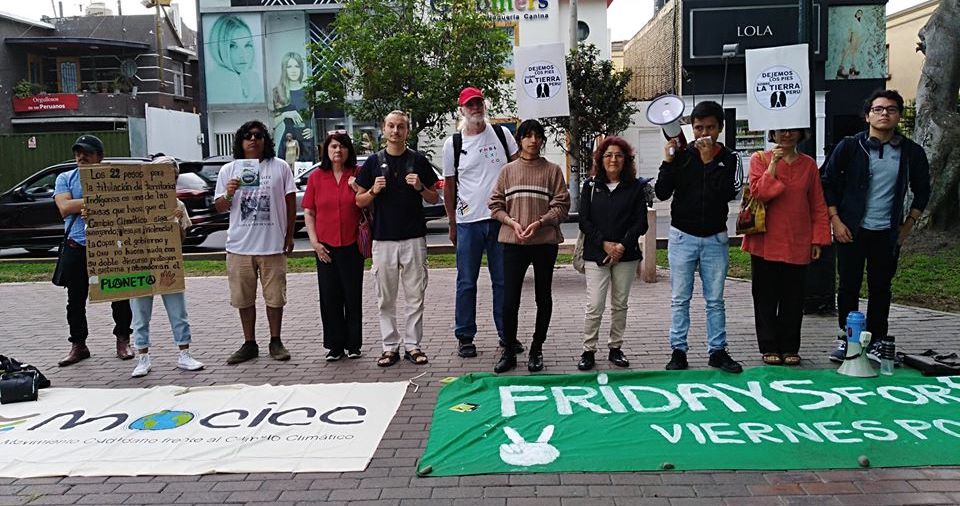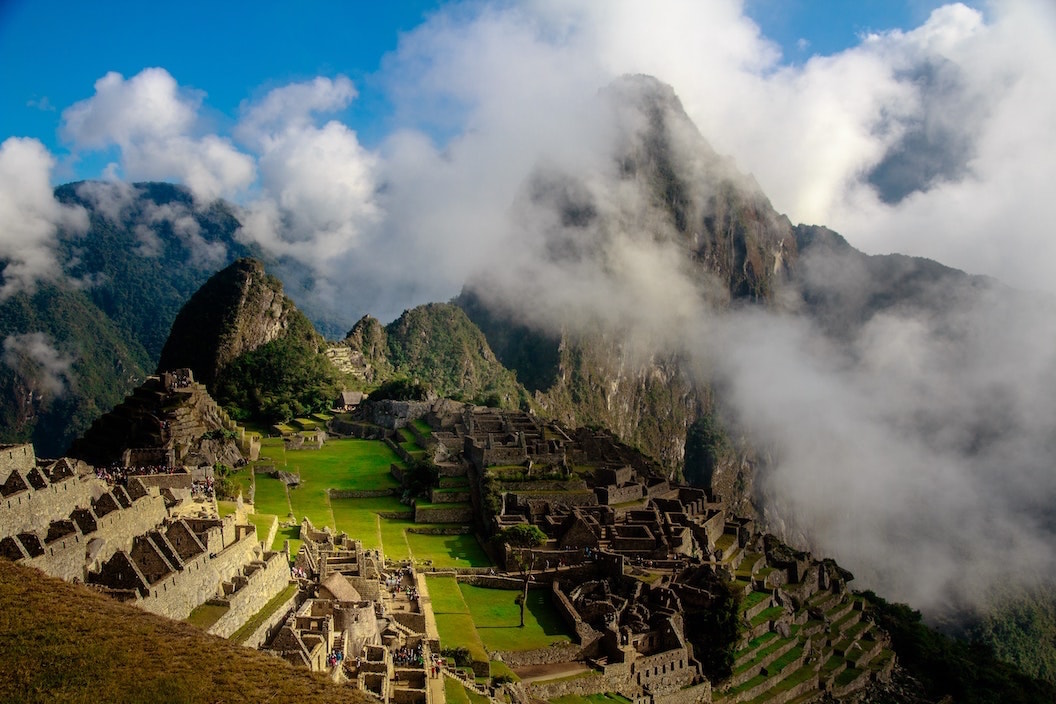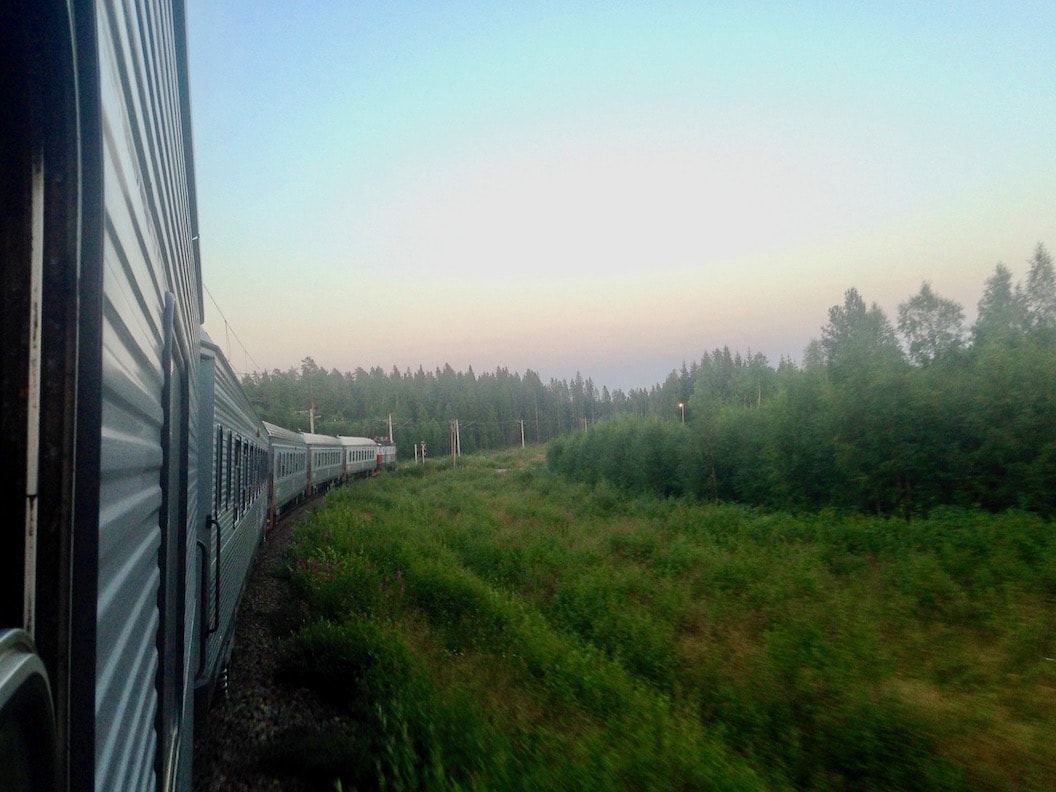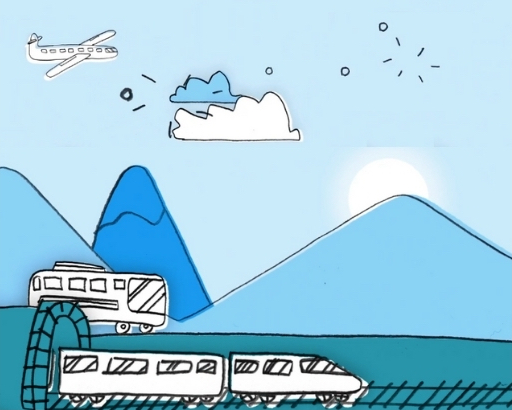Cover picture: activist Bruno Portillo at a rally in Lima

The project Dejemos los pies sobre la tierra – "Let's keep our feet on the ground" – was inspired in part by the insistence of young activists like Greta Thunberg that not flying is an important individual contribution to reducing global carbon emissions.
Both individual and institutional responses are necessary. But there will be no institutional response without a demonstration that individuals are willing to change their own lives in response to the emergency. It is undeniable that the carbon cost of flying is very hard to justify. So that message needs to get out.
As we say on our web page, a single flight between Lima and Madrid produces as much carbon emissions in a few hours as the average Peruvian produces in an entire year.
Encouraging people to fly less collides with the perception that tourism is tremendously important to the Peruvian economy, and that asking people to not visit Perú is antipatriotic.
Our response has been to underline the fact that we are not asking people to not visit Perú, but rather that they be aware of the carbon cost of their visit, and that they try to maximise the benefit associated with that cost.
Perú is an enormous country full of interesting historic, natural and cultural attractions. And yet, 95% of foreign visitors go to one small place: Machu Picchu. As with many such tourism concentrates, the government has had to take extraordinary measures to control the site. Visits need to be booked in advance, and there is a limit on the amount of time a visitor can stay there. Even so, what you mostly see if you visit Machu Picchu is other people visiting Machu Picchu.

Cusco, the gateway town to Machu Picchu has been clamouring for a new airport for a long time, with the stated purpose to double the amount of passenger traffic going to the city. But Cusco is already collapsing under the pressure of tourism. There is nowhere to build the hotels necessary to accommodate twice as many tourists. The city's streets cannot handle the current traffic, much less the increase which will result. And that's just Cusco: doubling the tourist population will put an unbearable load on Machu Picchu, the Inca Trail and the Sacred Valley.
It's hard to know how to deal with these issues. "Good" tourism would be more respectful of the land and cultures being visited, more aware that a tourist is essentially a guest in someone else's living environment, and above all much lower intensity.
While tourism does bring economic benefit for some, it produces hardship for others; the conversion of housing into hotels can significantly increase the cost of housing, and the huge demand for water resulting from the hospitality industry can lead to water shortages or tax increases.
In many ways, mass tourism is an extractive industry: it seeks to extract economic value from some attraction, whether natural or historic or cultural, and in doing so it modifies the resource in ways which make it unrecognisable. Monuments crumble from the constant passage of hands and feet; cityscapes are dismantled to build hotels and fast food outlets; wilderness is overrun by hordes of travellers who trample the vegetation and discard their garbage and waste products.
"In many ways, mass tourism is an extractive industry: it seeks to extract economic value from some attraction, and in doing so it modifies the resource in ways which make it unrecognisable."
Tourism can certainly contribute to a local economy, but the Peruvian economy would benefit more from a traveller who spent a month in Perú than from three travellers who spent one week each. Part of the solution needs to be finding economic activities other than tourism, so that places like Cusco can prosper without having to suffer from extractive tourism.
It's actually very hard to make the argument that no-one should fly inside Perú, and we don't try to deny it.
A large part of Perú is mountainous and, unlike Switzerland, doesn’t have drilled tunnels through the mountains. The mountain pass on the central highway reaches 4,818m (15,807 feet) and is subject to frequent closures because of snow. The eight-hour, 420-km drive from Lima to Huancayo (the capital of the Central Andes region) can be extended to 12 hours or several days in bad weather, yet could be achieved with a 45-minute flight of less than 200 km. It's almost certain that if you fly, you emit less carbon than you would by driving a private vehicle. Even taking a bus can represent similar carbon consumption to flying, in part because most of the buses used in Perú are badly maintained and well past the end of their useful life.
Furthermore, travelling by road in Perú is really dangerous. Most mountain roads are completely inadequate to their purpose and thousands of people die every year, many of them as a result of buses falling off a high cliff. Drivers spend far too long at the wheel and sleep deprivation is compounded by oxygen deprivation on the high mountain passes. There are reputable bus lines between major centres, with well-maintained buses and drivers who respect the safety norms. But that's not the day-to-day experience of the average rural Peruvian.
Our response to that is to promote what we call "travel with dignity". If we're going to ask people to consider alternatives to flying, we have to have alternatives which are comfortable, safe and environmentally sound, and available to more than just a small part of the population; it should be the norm. This cannot be achieved solely through individual action; it requires the involvement of both government and the transport industry.
The improvement in the Peruvian economy over the past 20 years has been reflected in a constant increase in the number of Peruvians who take domestic flights.
Even so, half of the population has never flown, and much of the rest fly only very occasionally. That's not a political or environmental decision, it's a purely economic decision, and reflects the enormous gap between rich and poor in the country.
"Half of the population has never flown, and much of the rest fly only very occasionally. It's a purely economic decision, and reflects the enormous gap between rich and poor in the country."
For decades, the entire continent of Latin America has been at the top of world inequality measures. Economic inequality means inequality in energy consumption and carbon emissions, too. The "average" Peruvian is not high on the list of carbon emitters, which gives the not-so-average Peruvians – the ones whose budget or employment allows them to fly many times per year – a convenient excuse for not worrying about their own carbon footprint.
If there is one thing we could achieve from the Flight Free movement, I would hope it would be to convince these privileged members of Peruvian society that their individual lifestyle choices cannot be justified by the involuntary poverty of the majority of the population.
I hope the Flight Free movement will have an impact in Latin America.
For better or worse the pandemia-related lockdown has shown many people that flying is not as necessary as they thought it was. And, if they thought about it, they might conclude that intercontinental travel presents some pretty serious potential health risks, on top of being a contributor to the climate emergency.



